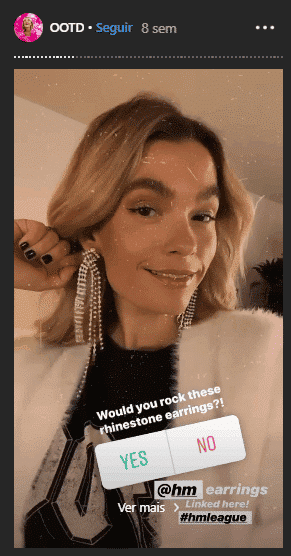The magical side of marketing is due to the fact that there is no rule to be followed. There are no formulas or pre-determined paths that will provide the same results for everyone.
Each business has its values and goals, generating different messages and attracting distinct audiences.
Nevertheless, the big question in marketing is always the same regardless of a company’s particularities: “How to attract more people and sell more?”.
Using interactive content in different marketing strategies could be one of the solutions you are looking for, not just to attract new clients but also to make them loyal to your brand.
In addition to being versatile, interactive content is perfect for connecting with your audience and engaging them in a more significant way, and bringing better results than static content.
In this article, we will talk about the following topics:
- What are the Different Marketing Strategies?
- What are the Benefits of Using Interactive Content?
- How to Use Interactive Content in Different Marketing Strategies?
- Wrap Up
What are the Different Marketing Strategies?
Marketing is a business’ area focused on offering its products and services in the most attractive way in relation to its target audience.
Its goal is to show benefits to convince potential buyers, at the same time it brings more value to the brand compared to competitors.
There are infinite ways that can be done, which makes marketing an extremely flexible and dynamic effort. It has to embody the brand’s identity and then follow consumer habits and demands to keep a product or service indefinitely relevant.
That is why there are so many areas within marketing itself, each with their own way to address, announce and engage.
One example is Influencer Marketing, which has only become a thing in the last few years with the growth in popularity of digital influencers, mainly on social media. Companies use the engagement of their niche audience to pair a celebrity’s image with a product or brand.
We can’t say Influence Marketing is new. It’s a strategy that has been tied to movie stars, singers, and other notable personalities for decades.
But social media changed that game, creating even more opportunities to connect with very specific buyer personas.
Other well-known marketing models in this new digital era are:
- Content Marketing
- Digital Marketing
- Social Media Marketing
- ABM
- Relationship Marketing
- Affiliate Marketing
- Customer Reference Marketing
The thing about all of these marketing strategies is that they aren’t exclusionary. You don’t need to choose one, but pick the ones that make more sense for your goals and your audience as complementary approaches.
This choice depends on a series of factors but the priority will always be studying and knowing the people you want to reach, using their language, and meeting their expectations.
What are the Benefits of Using Interactive Content?
Regardless of the method you use to apply marketing strategies in a business, interactive content is always a great idea to get your audience’s attention.
Why? It’s in the name itself, something every human being craves: interaction.
To understand what it brings to the table, we first need to understand the core of this concept. Interactive content is any marketing piece that invites and allows user interaction, putting them in an active role in building a unique, personalized final experience that only exists because they are making it happen.
Because of this, the first benefit can only be:
Boosts engagement
With interactive content, the audience becomes an active part of the content, becoming way more interested in the message you want to give them.
Some examples are a non-linear video with a “choose your path” styled script, or a calculator that shows how much material you need to build a house of determined size.
Or an infographic that let the user unveil and discover information visually at their own pace.
Using this kind of content, marketing can educate and surprise the audience while displaying a brand, passing a message, and inviting them to follow the next steps in a buyer’s journey towards conversion.
Educates the audience and builds their loyalty
Interactive content is strongly linked with customer loyalty. It also generates value for a brand, prepares your audience better, and increases sales.
88% of marketers today say that interactive content helps with brand differentiation, and 79% of them use it in combination with other types of content to improve message retention.
It is therefore common sense to understand that interactive content is more effective in educating the public than static content, resulting in more qualified leads. Conversion rates benefit highly from it.
Accelerates buying decisions
Leads have a better, more profound understanding of the brand’s value when they are actively consuming content, which cut corners to the endpoint of a buyer’s journey.
Improves the user experience
Another important benefit interactive content offers is creating unique experiences for each new user.
As they participate in the unfolding of information, that moment becomes special to a point where they start differentiating your brand from competitors. Interaction stands out.
It is an effort to improve a brand’s value. And you probably know what a good branding strategy does: it creates a halo of exclusivity around a business, raising interest and loyalty, and even creating spontaneous advocates that will organically promote a product or company.
But interactive content isn’t just about the major effects felt by your brand. Since the beginning of this strategy, it will immediately improve some important, yet smaller metrics.
This kind of material has more potential to go viral, which means it can spread fast and generate the engagement you seek in likes, shares, and buzz around it.
Makes your SEO better
Talking about organic engagement growth, your site’s SEO also improves when using interactive content.
This happens because interaction is really good for user retention and for convincing them to follow internal links to other material.
The result of any improvement in organic traffic is reduced costs for marketing, as people will discover your brand naturally while searching for a product or service.
It means that the ROI for interactive content is usually greater than static’s.
Even those brands that don’t produce content specifically for the internet (we do not recommend this at all), like companies investing in Relationship Marketing, can benefit from interactive content, especially by making physical activations go viral online.
How to Use Interactive Content in Different Marketing Strategies?
As we already noted, any kind of marketing strategy can use interactive content to engage the audience, bring them closer, and make them more loyal.
That’s because it combines entertainment, information, and a push towards sales, helping you meet your marketing goals quicker.
To give you a better idea of how can you use interactive content in different marketing strategies, we highlighted some examples that always bring positive returns.
Let’s take a look at them.
1. Content Marketing
Content Marketing is probably the strategy that gains the most benefit from inserting interactive content in the pipeline.
It is used to educate, inform and show a brand in unique ways that stay in the viewer’s mind longer.
Another advantage of your Content Marketing plan is being able to reuse material, making static pieces interactive.
That way, you captivate leads that were not impacted by the previous format and show your brand in a different light to those who already liked your content.
A static blog post can become an interactive video. An eBook can become an infographic. Landing pages can be more dynamic and increase both retention and conversion metrics.
You can see some interesting examples of interactive white papers that perfectly balance information with action to engage and educate audiences.
Another good example is an interactive video made in partnership between Buzzfeed and Tasty, sponsored by Walmart and using Eko.
In this video, it’s possible to create 16 recipe options using a single common ingredient. The result is visually appealing, engaging, and teaches cooking at the same time.
Any type of interactive content can be used in a Content Marketing strategy, as long as it makes sense to your audience. Some other options are calculators, interactive ebooks, quizzes, white papers, and videos.
2. Social Media Marketing
Marketing made for social media can also bring huge benefits from interaction, as it incentivizes organic sharing and other organic metrics such as likes and comments.
It is actually a perfect match. Interaction, as we know, is one of the marketing goals for social networks. You want the audience to engage and take action, so interactive content can be prevalent and abundant in your plan.
Just like Content Marketing, social media also allows you to experiment with varied formats and to see what works best. An example that is simple but always works is using likes and shares as tools for expressing an opinion.
A brand that is notorious for its interactive content for social media is Buzzfeed and its quizzes that always go viral.
After almost ten years of popularity, they continue to engage, with content constantly garnering millions of views and thousands of comments.
This social media tactic is not new. Another example comes from Walmart on Facebook. Just by putting two different ice creams to battle for the audience’s preference, it gathered more them 50k likes and almost 2k comments. An incredible return for such simple content.

3. Relationship Marketing
Relationship Marketing is a strategy focused on engaging clients by offering unique and satisfying experiences with a brand. And there is a lot of space for interactive content in that plan.
In this case, beyond engagement, what interaction can do is to feed the company with the information it needs about its audience to improve products and services, as well as how you show that value to people.
As Relationship Marketing needs a deeper understanding of a buyer’s persona, it’s essential to do research and collect feedback about their perception of the brand.
Interactive polls, researches, and quizzes allow you to use their engagement to better understand their behavior and expectations.
An example comes from Sears, which made a landing page with a quiz based on myths about washing machines.
With a single interactive content, they educated their leads, created a path to conversion, and also gathered information about their buyer persona’s knowledge on the matter.
4. ABM or Account-Based Marketing
Account-Based Marketing is a marketing strategy focused on data and Business Intelligence.
As it is more focused on leads with a bigger potential for conversion, the success rate increases the more personalized the content is.
Interactive content can be used in this plan to find the prospects that are closest to a buying decision, as one of its benefits is exactly engaging and qualifying leads.
Some options when using this format are calculators and interactive quizzes, that can attract people further into the buyer’s journey and use the content itself as a sale argument when they’re in the consideration stage.
An example is iContact. They made an interactive calculator that shows leads how much they can save money using their email marketing service.
5. Influence Marketing
Influence Marketing is a strategy to partner with influential people and organizations to show and sell products.
You can use interactive content to connect your brand with highly engaging fans or use the influencer’s image as a point of discussion among your audience.
You can also tie the interaction with coupons and gifts to incentivize participation, combining the halo effect that digital influencers bring, and unique interactive experiences.

6. Reference Marketing
Reference Marketing uses customer reviews and recommendations to amplify a brand’s message and increase its reach to other people. It’s commonly known as word-to-mouth marketing.
As is the case with Influence Marketing, using coupons and gifts tied to this interaction can help increase success rates. You have to compel and convince your public to talk about you in order for it to work.
In Reference Marketing, in which high retention and loyalty matter so much, giving the audience a win-win experience is a great growth hack.
7. Affiliate Marketing
One of the strategies within a Digital Marketing plan, Affiliate Marketing creates partnerships with other companies, digital influencers, and sites so they can recommend your products in exchange for a percentage of each sale
The dynamics are similar to Reference Marketing but, instead of organic clients, the recommendation is performed by other brands and people that have their own audience.
So they need to perceive value and trust in what you have to offer.
Interactive content is excellent to attract affiliated partners, especially ROI-style calculators that show how much they can earn if they advertise your products to their followers. It’s a kind of content that also works for a business that sells franchises.
Wrap Up
It is important to remember that creating content alone won’t guarantee good results.
You need to pair it with a well-elaborated strategy for distribution, starting with research to know what is relevant to your buyer persona and what engages them.
Interaction isn’t the only factor to go viral. It needs to be aligned with your audience’s expectations and delivered in a way that will boost reach potential.
It is also crucial to measure results and analyze metrics. Most of the tools used for this kind of strategy offer a dashboard so you can keep track of your progress.
The benefits gained from interactive content in different marketing strategies are always greater than the resources and the effort spent on them.
So, you definitely should keep pursuing knowledge on the matter and further understand how you can improve your numbers even more with time.
Ready to take your marketing strategies to new heights with interactive content?
Discover the game-changing capabilities of Ion in our Content Cloud suite. Explore how Content Cloud can empower your marketing efforts with interactive content that captivates, engages, and converts your audience. Learn more here!
Start creating interactive content with Ion and increase your marketing results!
Start creating interactive content with Ion and increase your marketing results!









